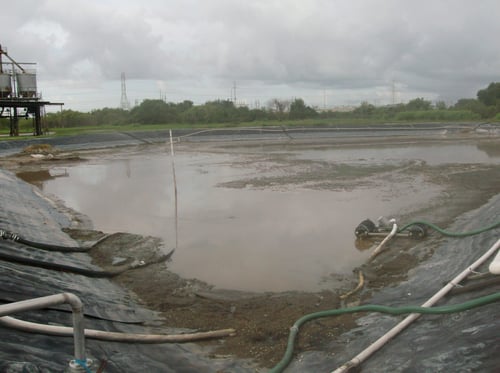
Sludge dewatering separates sludge into liquid and solid components for waste minimization. There are various technologies for sludge dewatering, including plate & frame and belt filter presses, centrifuging, and geomembranes. In addition to these, there are other options available.
It is important to note that dewatering is not intended to treat the sludge or liquid, it only separates the solid and liquid components so that it is easier and more cost-effective to handle the separate phases for final disposal. Once the sludge has been dewatered, both the solid and liquid components may contain contaminants that may need to be treated separately.
Sludge dewatering is typically focused on reducing the weight and volume of the sludge so that disposal, including transportation, costs are kept to a minimum. Water removal is the primary means of volume reduction. Before sludge waste can be treated or disposed of in the most economical manner dewatering is necessary.
What Does Sludge Dewatering Accomplish?
It should be noted that the dewatering process is not intended to treat the sludge or liquid, it only separates the solid and liquid components to make handling the separate phases easier and more cost-effective. After the sludge has been dewatered, both the solid and liquid components may contain contaminants that need to be treated separately.
Dewatering is typically focused on reducing the weight and volume of the sludge so that disposal, including transportation, costs are kept to a minimum. Water removal is the primary means of volume reduction. Before sludge waste can be treated or disposed of in the most economical manner, dewatering is usually necessary.
What Is a Geomembrane?
Geomembranes are used for dewatering, stabilization, separation, and containment for various applications including municipal treatment, sediments, industrial, construction and for remediation activities. There are many applications of geomembranes for dewatering including using tubes, bags, and other membrane technology. Used independently or in concert with other treatment mechanisms, Handex can tailor a wide variety of applications to meet client needs.
Geomembranes can also be used for applications where a high volume of water containing solids needs to be effectively dewatered such as:
- Water Filtration Plant Residuals
- Biosolids
- Wastewater Residuals
- Ash Residuals
- Settling Pond Residuals
Geomembranes use permeable fabrics to filter the slurry through small pores allowing the liquid to pass and solids to be retained on the membrane. Sometimes slower than mechanical dewatering methods, geomembranes often provide a lower cost for dewatering as compared to other alternatives.
About Handex
Handex is a provider of Pumping, Dredging, Sludge Dewatering and Treatment of industrial and process wastes and sediments. Our staff includes experienced Project Managers, Operators, Technicians, Fabricators, Mechanics and Health and Safety Professionals. Our objective is to meet and exceed client expectations while providing safe and cost-effective services.



